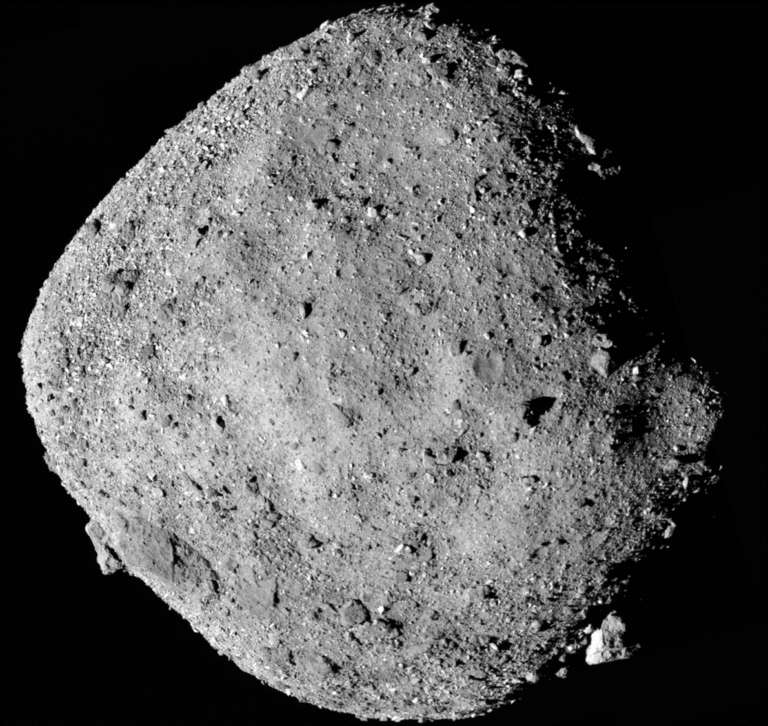Jason Davis • Dec 10, 2018
News brief: OSIRIS-REx finds water on Bennu
OSIRIS-REx team members held a press briefing today at the 2018 American Geophysical Union meeting, and announced that the mission has already found water on asteroid Bennu. The water is locked in clay minerals, and was detected with the spacecraft’s OVIRS and OTES instruments. The signature was strong enough to be detected while OSIRIS-REx was still approaching Bennu, which was a bit of a surprise, according to NASA Goddard's Amy Simon.
Bennu was chosen specifically because it was suspected to have both water and organic materials — important building blocks for life — so today’s announcement checks off an important mission milestone. Organics have not yet been found.
Bennu, like asteroid Ryugu, is very rocky. Principal Investigator Dante Lauretta says there are both tip-of-the-iceberg boulders that extend deep beneath Bennu, and others that are merely resting on the surface. This will make collecting a sample in 2021 challenging. It’s still early to think about sample sites, but one possibility is basins that look like impact craters and are filled with fine-grained material. Another finding from the briefing was that ground-based radar models of Bennu were very accurate.
Finally, I asked the OSIRIS-REx team what they know about Bennu's mass thus far. Erin Morton, the mission's communications lead, said these figures were derived after the first three passes of the spacecraft over Bennu's north pole:
- Mass determination from 3 flybys: 7.34x1010(±0.15)kg
- Volume = 0.06171×109 (±0.0004) m3
- Density = 1190 (±24) kg/m3
- Bennu Gravitational Parameter = 4.9 (±0.1) m3/s2
For more on this story:
— Dante Lauretta (@DSLauretta) December 10, 2018
While Bennu is too small to have free-flowing water or chunks of ice, our data suggest the asteroid’s larger parent body hosted liquid water in the distant past. It also means that mining water from asteroids like Bennu may be possible on future missions. #WelcomeToBennu #AGU18 pic.twitter.com/xMORSb7Woo
— NASA's OSIRIS-REx (@OSIRISREx) December 10, 2018
Early data from Bennu show that I’m exactly where I need to be to achieve our science goals. The biggest surprise so far is the number and size of boulders on Bennu’s surface, but my team is more than ready to tackle that challenge. Let the adventure begin! #WelcomeToBennu #AGU18 pic.twitter.com/z6TCHaBpM2
— NASA's OSIRIS-REx (@OSIRISREx) December 10, 2018

Support our core enterprises
Your support powers our mission to explore worlds, find life, and defend Earth. You make all the difference when you make a gift. Give today!
Donate

 Explore Worlds
Explore Worlds Find Life
Find Life Defend Earth
Defend Earth

